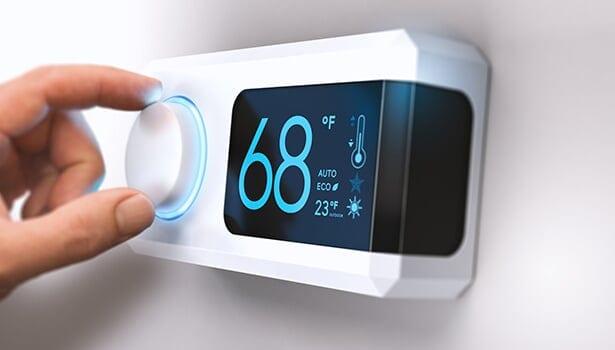Covenant Heating and C.hl_page-creator--content .heading-deUHfLcTJK { margin-top: 0px;
margin-bottom: 0px;
margin-left: 0px;
margin-right: 0px; } .--mobile .hl_page-creator--content .heading-deUHfLcTJK { } .hl_page-creator--content .cheading-deUHfLcTJK {
font-family: var(--headlinefont);
background-color: var(--transparent);
color: var(--white);
bold-text-color: var(--text-color);
italic-text-color: var(--text-color);
underline-text-color: var(--text-color);
link-text-color: var(--link-color);
icon-color: var(--text-color);
font-weight: normal;
box-shadow: none;
padding-left: 0px;
padding-right: 0px;
padding-top: 0px;
padding-bottom: 0px;
opacity: 1;
text-shadow: none;
border-color: var(--black);
border-width: 2px;
border-style: solid;
line-height: 1.3em;
letter-spacing: 0px;
text-align: center;
}
.--mobile .hl_page-creator--content .cheading-deUHfLcTJK {
}
Covenant Heating and Cooling
.--mobile .heading-deUHfLcTJK .ProseMirror {
font-size: 24px;
line-height: 1.3em;
text-align: center;
font-weight:undefined;
}
.heading-deUHfLcTJK .ProseMirror {
font-size: 24px;
text-align: center;
font-family: inherit;
color: var(--white);
overflow-y: visible;
padding: 0;
line-height: 1.3em;
font-weight:300;
/* overflow visible so that popups are visible */
}
.heading-deUHfLcTJK .ProseMirror p:first-child,
.heading-deUHfLcTJK .ProseMirror h1:first-child,
.heading-deUHfLcTJK .ProseMirror h2:first-child,
.heading-deUHfLcTJK .ProseMirror h3:first-child,
.heading-deUHfLcTJK .ProseMirror h4:first-child,
.heading-deUHfLcTJK .ProseMirror h5:first-child,
.heading-deUHfLcTJK .ProseMirror h6:first-child {
padding-left: 0 !important;
}
.heading-deUHfLcTJK .ProseMirror strong {
color: var(--text-color);
}
.heading-deUHfLcTJK .ProseMirror em {
color: var(--text-color) !important;
}
.heading-deUHfLcTJK .ProseMirror u {
color: var(--text-color) !important;
}
.heading-deUHfLcTJK .ProseMirror a,
.heading-deUHfLcTJK .ProseMirror a * {
color: var(--link-color) !important;
text-decoration: none;
line-height:1.3em;
}
.heading-deUHfLcTJK .ProseMirror a:hover {
text-decoration: underline;
}
.heading-deUHfLcTJK .ProseMirror p:not(:has(strong)),
.heading-deUHfLcTJK .ProseMirror h1:not(:has(strong)),
.heading-deUHfLcTJK .ProseMirror h2:not(:has(strong)),
.heading-deUHfLcTJK .ProseMirror h3:not(:has(strong)),
.heading-deUHfLcTJK .ProseMirror h4:not(:has(strong)),
.heading-deUHfLcTJK .ProseMirror h5:not(:has(strong)),
.heading-deUHfLcTJK .ProseMirror h6:not(:has(strong)),
.heading-deUHfLcTJK .ProseMirror ul li p:not(:has(strong)){
font-weight:300 !important;
}
.--mobile .heading-deUHfLcTJK .ProseMirror p:not(:has(strong)),
.--mobile .heading-deUHfLcTJK .ProseMirror h1:not(:has(strong)),
.--mobile .heading-deUHfLcTJK .ProseMirror h2:not(:has(strong)),
.--mobile .heading-deUHfLcTJK .ProseMirror h3:not(:has(strong)),
.--mobile .heading-deUHfLcTJK .ProseMirror h4:not(:has(strong)),
.--mobile .heading-deUHfLcTJK .ProseMirror h5:not(:has(strong)),
.--mobile .heading-deUHfLcTJK .ProseMirror h6:not(:has(strong)),
.--mobile .heading-deUHfLcTJK .ProseMirror ul li p:not(:has(strong)){
font-weight:undefined !important;
}
.cheading-deUHfLcTJK .ProseMirror p:first-child:before,
.cheading-deUHfLcTJK .ProseMirror h1:first-child:before,
.cheading-deUHfLcTJK .ProseMirror h2:first-child:before,
.cheading-deUHfLcTJK .ProseMirror h3:first-child:before,
.cheading-deUHfLcTJK .ProseMirror h4:first-child:before,
.cheading-deUHfLcTJK .ProseMirror h5:first-child:before,
.cheading-deUHfLcTJK .ProseMirror h6:first-child:before {
color: var(--text-color);
content: "\";
font-family: "";
margin-right:5px;
font-weight: bold;
}
HEADLINEooling

11937 Highway 25
Calera, AL 35040
205-319-7202
24/7 Customer Support
Mon-Sat 8AM–4PM
24/7 Emergency Services Available
Covenant Heating and Cooling
Blog

Heat & Cool Efficiently – Install a Programmable Thermostat
Isn’t it better for utility bills and energy consumption if you set your thermostat to one temperature and just leave it alone?
This is a common misconception… In the winter, when a house drops below its normal temperature, it loses energy to the surrounding environment more slowly. And in the summer, the higher interior temperature slows the rate that heat gets into the home. The longer your house can stay at a lower temperature (during cold days) or higher temperatures (during hot days), the more money you will save on your cooling/heating costs. EnergyStar.gov reports that as much as half of the energy used in your home is on the heating and cooling. This makes it important to maximize the efficiency! One way to do this is install a programmable thermostat. Through proper use of a programmable thermostat, you can save about $180 a year in energy costs.
What is a programmable thermostat?
A programmable thermostat is a convenient and cost-effective way to keep your home at the correct temperature and reduce your home’s energy consumption. Programmable thermostats allow you to pre-set the temperatures for your home for different days and times. This keeps you from maintaining a constant temperature 24/7. You could program the thermostat for one setting for weekdays during school/work time when no one’s home... another for weeknights... and a third setting for weekends when your home may be used more.
What are the benefits of using a programmable thermostat?
They make it easy for you to easily control the temperature of your home whether you’re awake, sleeping, or away from your home.
It helps save both energy and money on your utility bills.
You can pre-set the temperature so that when you walk in the door after a long day at school/work, your house is exactly the temperature you want it to be.
Programmable thermostats are quite reliable and generally last for a long time.
Are there any drawbacks to using a programmable thermostat?
Unfortunately, programmable thermostats aren’t ideal for all families. If you have older children who are home when the rest of the family is out or if you and a spouse work opposite shifts, it can be difficult to program the thermostat effectively.
Programmable thermostats also don’t work well for families who don’t have a consistent routine. If one person works a flexible schedule or the calendar is always shifting, resetting the program may become a hassle.
Programmable thermostats can be tricky to use.
Programmable thermostats may not be compatible with your HVAC system, particularly if it’s an older system.
What settings should you use on your programmable thermostat if you want to save money on your energy usage and utility bills?
Temperature Settings
In the winter, a good rule of thumb can be setting the temperature to 68 degrees. Most can agree that this is comfortable and can also be cost-efficient. When the household is asleep or when everyone is away, lowering the thermostat 6 to 10 degrees can help save money. Turning the thermostat down 10-15 degrees for 8 hours can save 5-15% a year on your heating bill. We do recommend keeping your home’s temperature about 55 degrees in the winter to lessen the chance of pipes freezing up with the frigid weather outside.
In the summer, you can use the same strategy as above, but in reverse. Try setting the thermostat to 75 to 78 degrees when you’re home. And when you’re away and your home is empty, turn the temperature up a few degrees and less cooling is required. To save even more on your utility bills, consider cooling with portable fans or ceiling fans rather than lowering the thermostat and air conditioner.
Of course, these rules aren’t set in stone. And flexibility will be needed at times. For example, if you’re hosting a large holiday party at the end of the year, you probably won’t be setting your thermostat on your normal heat settings. You’ll keep it lower to account for the extra bodies in your home. If you go out of town for more than a day or so, it’s also a good idea to adjust the temperature in your house to a higher or lower temperature, depending on the time of year, since your home will be empty.
Fan Settings - On vs. Auto
As a general rule, setting your thermostat to “auto” will save you both energy and money. Setting the thermostat to “on” means that the blower will run regardless of whether the temperature setting has been reached.
How can I be confident that my programmable thermostat is installed and programmed properly?
Let us take the guesswork out of your thermostat dilemma. We will come install, program, and train you on how to make changes to your new thermostat. Our trained technicians have a variety of thermostats with varying features and pricing. We can help you choose the one best suited for your needs and have it installed in no time. Contact us today!
Hours of Operation
Mon-Sat 8:00 AM – 4:00 PM
Sun Closed
24/7 Emergency Services Available
© All rights reserved | Privacy Policy | Terms and Conditions
Site Designed and Maintained by Trustway Marketing